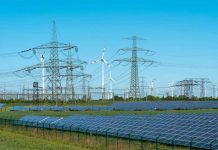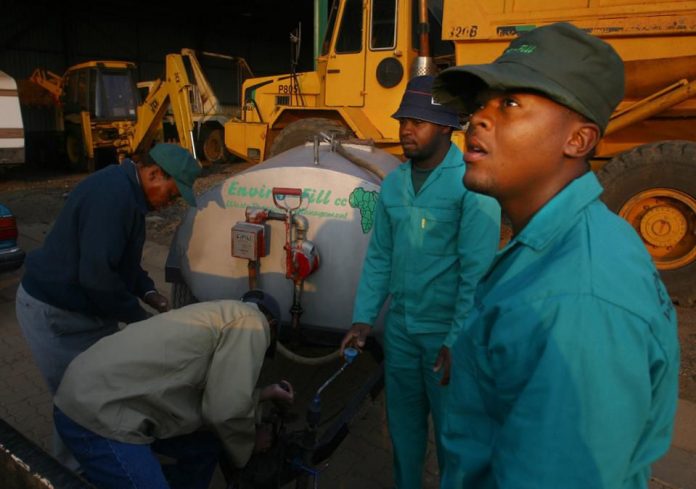Going green will mean tossing the trash, literally. Cape Town, South Africa is using a waste-to-energy plant to reduce the garbage in its landfill sites while also helping to raise its use of green energy to a fifth of its electricity supply.
The broader context is that South Africa has an electricity crisis that has resulted in a series of brownouts, all to prevent the transmission grid from buckling. In fact, Eskom, which is the state-run power provider, can’t meet the daily demands and is now in need of a financial bailout. Enter waste-to-energy, which is an alternative source of electricity — and one that can ease the country’s reliance on coal. But is this a preferred option?
“Municipal landfill sites are not only an eyesore, they also pose serious environmental and health hazards by generating huge quantities of methane gas,” says the Climate Neutral Group, which provides carbon management services in Africa. Its projects will “capture methane from five landfills sites in Johannesburg and then turn it into electricity, solving two serious issues that South Africa currently faces.”
It expects to produce 19 megawatts of electricity that will power 16,500 homes — the biggest such project in the country.
Consider that 600 million people lack access to electricity across the continent of Africa. And by 2050, its population will grow from 1.1 billion people today to 2 billion, all while the region’s economy continues to expand by 10% a year. That means is that the African people will be demanding more energy while also creating more garbage. If waste-to-energy can become a worthwhile pursuit, it could help reshape Africa — and other developing regions.
Waste-to-energy is a form of biomass: everyday garbage is used as a feedstock to create electricity or heat. The other options are that the trash goes into a landfill and is subsequently incinerated or it is recycled.
In 2015, approximately 262 million tons of municipal solid waste was generated in the United States, says Statista. In 2017, about 334 trillion British thermal units of energy were derived from biomass energy consumption in the United States, where there are about 75 plants. In 2024, the market for waste-to-energy is expected to reach about $43 billion.
“Burning municipal solid waste reduces the volume of waste by about 87%,” notes the U.S. Energy Information Administration. The Environmental Protection Agency further estimates that estimates these facilities save about 1 ton of greenhouse gas emissions per ton of trash burned.
Twin Realities
To be sure, waste-to-energy plants have been slow to gather steam in the United States: the conversion process of taking waste and converting it to energy is too dirty. Others reason that the trash can be recycled for less money, meaning that the cost of converting the waste into electricity is more expensive than competing technologies.
There are, however, about 420 waste-to-energy plants in Europe. And China is quite active too, producing 7,300 megawatts of electricity from 339 waste-to energy plants. That is expected to grow to 10,000 megawatts and 600 plants in the next year.
The twin realities are that as the world’s economies are accelerating, they are in need of more energy and a way to reduce the amount of trash at their landfills. The World Bank is predicting that China’s solid waste generation will double to 500 million tons by 2025, which is forcing the country to create “zero-waste” cities.
There’s also the need to reduce the use of fossil fuels and to employ more green energy resources. In developing parts of the world, meanwhile, there is simply not enough space to keep expanding landfill sites. At the same time, those sites host harmful pollutants that can leach into the soil while gases from decomposing materials will form potent methane emissions.
As far as Africa goes, its investment outlook is on the rise — committed to open borders, entrepreneurship and a supportive regulatory structure. And bringing all forms of clean energy to the continent is its top priority, which then promotes economic development and improved lifestyles. The good news is that it is attracting the likes of General Electric, ABB, Alstom, Siemens and Schneider Electric.
“The African continent should focus on having a clean and cheap energy supply for her growing population and industries,” says Helen Okon Ekpenyong, chief executive of Business Review Africa, in an interview with this writer, who is its North American editor. “‘Waste to Energy’ could be a game changer for the African economy. Importantly, the growing population in Africa is directly proportional to the increase in waste generated. Achieving a high and sustainable level of economic growth requires African leaders to be more strategic.”
Africa is poised to become the hotbed of the global economy. But the need for sustainable energy forms is a missing link — something that will breathe new life into the whole continent. Waste-to-energy is making headway in South Africa — a biofuel that could be a precursor of things to come both in Africa and around the world.
Source: Forbes

























